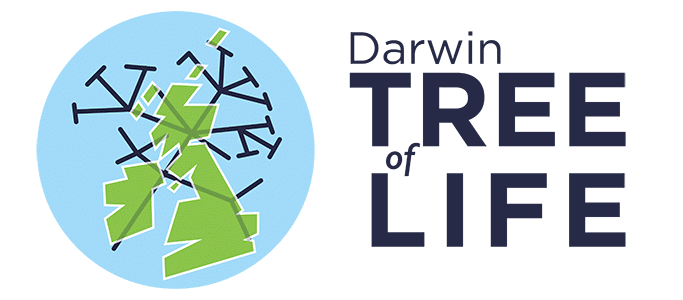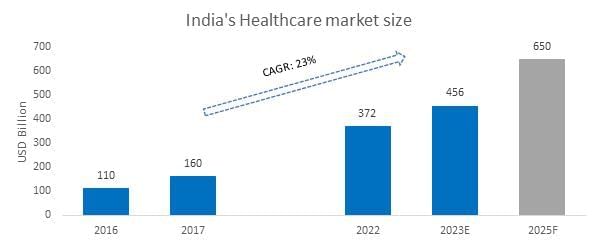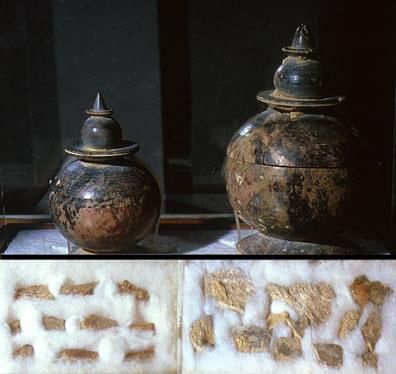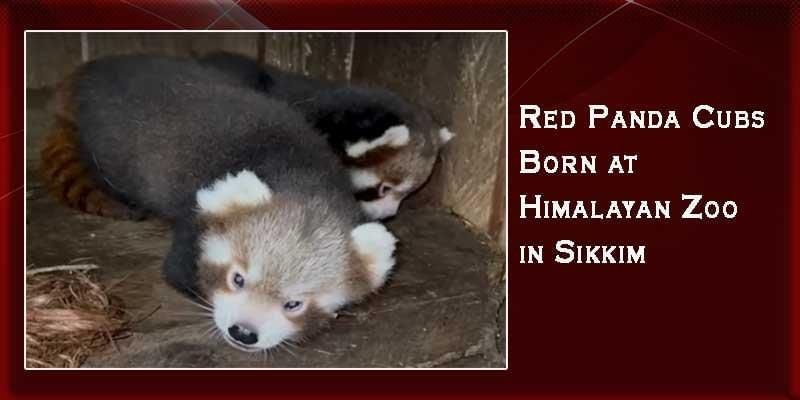UPSC Daily Current Affairs: 2nd August 2025 | Current Affairs & Hindu Analysis: Daily, Weekly & Monthly PDF Download
GS2/International Relations
How much India should trade with Russia must not be guided by Western diktat
Why in News?
Recently, US President Donald Trump threatened additional penalties on Indian imports, specifically targeting India's purchase of discounted Russian oil.
Key Takeaways
- India's oil imports from Russia surged due to steep price discounts.
- The US has issued warnings regarding potential trade penalties linked to India's energy trade with Russia.
- India's strategic foreign policy emphasizes national interests over external pressures.
Additional Details
- Steep Price Discounts: Russian crude oil is available at prices significantly below global benchmarks, leading to a rise in India's imports from $2.1 billion in 2020-21 to $56.9 billion in FY 2024-25.
- Energy Security Priority: For India, securing affordable and reliable energy is crucial for economic stability and consumer welfare.
- No UN Sanctions: India continues its trade with Russia as Russian oil is not under UN sanctions, which provides a legal framework for its purchases.
- Strategic Pragmatism: India adheres to a non-aligned foreign policy that prioritizes national needs over bloc politics.
India faces significant pressure from the US and NATO regarding its continued trade with Russia. The US has threatened a 25% tariff on Indian goods and warned of secondary sanctions for countries engaging in business with Russia. There is also legislative pressure in the US proposing a 500% duty on imports from nations trading in Russian-origin petroleum and uranium, which could adversely affect Indian exports to the US.
Additionally, India's ongoing trade with Russia could strain its strategic ties with Western allies, complicating defense cooperation and technology sharing. This scenario necessitates that India reevaluate its energy security strategy and reduce its reliance on Russian crude due to increasing Western pressure.
Strategic Changes for Oil Imports
- Diversify Import Sources: India can boost crude purchases from Gulf countries, the US, Latin America, and Africa, reducing reliance on Russia. For example, it has increased imports from Iraq and Saudi Arabia.
- Sign Long-term Contracts: Establishing long-term agreements with stable oil-exporting nations is essential for a steady supply. For instance, India signed a long-term deal with the Abu Dhabi National Oil Company (ADNOC).
- Invest in Strategic Partnerships: Strengthening ties through energy diplomacy and joint ventures in oil exploration abroad is vital. Indian PSUs like ONGC Videsh have stakes in oil fields in Vietnam, Venezuela, and Russia.
- Leverage Spot Market: Utilizing the global spot market for short-term deals and enhancing strategic petroleum reserves (SPRs) can be beneficial. India has successfully bought crude from the US and Nigeria during price dips.
- Boost Domestic Refining Flexibility: Upgrading refineries to process diverse crude grades is necessary for broader import options. Reliance and Indian Oil refineries can handle crude from various regions, including the US, Middle East, and West Africa.
Protecting National Interests
- Prioritize Strategic Autonomy: India should maintain an independent foreign policy, making decisions based on national interests rather than aligning with any geopolitical bloc.
- Engage in Diplomatic Dialogue: Proactively communicating with Western partners to clarify its energy needs and seeking carve-outs from potential sanctions is crucial.
- Strengthen Domestic Resilience: Increasing investments in renewable energy, expanding strategic oil reserves, and boosting refining capacity will reduce vulnerability to external shocks.
- Balance Competing Relationships: Careful navigation of ties with both Russia and the West is essential to ensure that economic cooperation does not compromise strategic partnerships elsewhere.
The situation highlights the tension India faces in aligning its national ambitions with global pressures, emphasizing the importance of an independent approach to its foreign policy and energy security.
GS2/Polity
Age Cap for Surrogacy in India
 Why in News?
Why in News?
The Supreme Court of India has recently reserved its judgment in a series of petitions challenging the age-related eligibility criteria established under the Surrogacy (Regulation) Act, 2021. These petitions involve couples who began the surrogacy process before the law's enactment on January 25, 2022, but are now disqualified due to the new age limits.
Key Takeaways
- The Surrogacy (Regulation) Act, 2021 aims to regulate surrogacy and promote ethical practices.
- The Act has faced criticism for its rigid age limits and potential violations of fundamental rights.
Additional Details
- Objective of the Act: The Surrogacy (Regulation) Act, 2021 seeks to regulate surrogacy in India, prohibit commercial surrogacy, and promote altruistic surrogacy based on medical necessity.
- Eligibility Criteria for Intending Couples: Couples must be legally married for at least 5 years, with the woman aged between 23-50 years and the man between 26-55 years. They must not have any living biological, adopted, or surrogate child.
- Eligibility for Single Women: Currently, only widows or divorcees aged 35-45 years are eligible for surrogacy, leaving unmarried women excluded.
- Surrogate Mother Criteria: Must be a close relative, married, and have at least one biological child, with an age range of 25-35 years.
- Certification Requirement: A Certificate of Essentiality is needed, including proof of infertility, a court order for parentage and custody, and insurance for the surrogate mother.
- Penalties: Engaging in commercial surrogacy can lead to imprisonment for up to 10 years and fines up to ₹10 lakh.
- Regulatory Structure: The National Surrogacy Board operates at the central level, complemented by State Surrogacy Boards.
- Supreme Court Concerns: The lack of a transitional provision for couples who began surrogacy before the law, the fairness of age limits, and the exclusion of unmarried women were all highlighted as significant issues.
The Supreme Court's scrutiny reflects the ongoing debate about balancing the regulation of surrogacy and protecting the reproductive rights of intending parents. The court emphasized that while the law's intent is to curb commercial surrogacy, it should not unreasonably hinder genuine couples from starting families.
GS2/Polity
India’s Indigenous Democratic Traditions - Revisiting the Chola-Era Electoral Legacy
Why in News?
Prime Minister Narendra Modi’s speech at Gangaikonda Cholapuram on July 27, 2025, emphasized India’s indigenous democratic traditions, which predate the Magna Carta. This article revisits ancient electoral practices, particularly those under the Chola dynasty, highlighting their significance in today’s democratic discourse.
Key Takeaways
- India's democratic practices have deep historical roots, not merely colonial influences.
- The Chola-era electoral system exemplifies early forms of self-governance.
- The kudavolai system demonstrates an ancient approach to elections emphasizing transparency and fairness.
Additional Details
- Vaishali: An early republic in the 5th century BCE, showcasing participatory governance.
- Kautilya's Arthashastra: References local governance structures known as samghas, indicating a long-standing tradition of self-governance.
- The Uthiramerur Inscriptions: These inscriptions detail a sophisticated electoral framework established during the reign of Parantaka Chola in 920 AD, including:
- Ward Constitution
- Eligibility and disqualification norms
- Committee formation and functions
- Right to recall elected members
- Kudavolai System: A unique electoral process involving the drawing of candidates' names from a pot, ensuring impartiality.
- Strict Standards: The electoral system enforced high moral and administrative standards, including:
- Age requirements and property ownership for candidates
- Disqualifications for debt defaulters and individuals with moral taints
In conclusion, India's democratic traditions are deeply rooted in its civilizational history, as demonstrated by the Chola-era practices. Recognizing and reclaiming this legacy is vital for fostering a more ethical, participatory, and accountable political landscape in contemporary times.
GS3/Science and Technology
Darwin Tree of Life (DToL) Project
 Why in News?
Why in News?
The Darwin Tree of Life (DToL) project is nearing the completion of its first phase, aiming to sequence the genomes of a significant number of species across Britain and Ireland.
Key Takeaways
- The project targets the sequencing of genomes from 70,000 species of eukaryotic organisms.
- It is part of the larger Earth BioGenome Project, which endeavors to sequence all complex life on Earth.
- The initiative employs advanced DNA sequencing technologies and computational tools to analyze genetic diversity.
Additional Details
- Eukaryotes: These are organisms with complex cells that have a defined nucleus. They include multi-cellular organisms such as protists, plants, animals, and fungi.
- Eukaryotic cells feature a nuclear membrane that encases the nucleus, which holds well-defined chromosomes.
- These cells also contain various organelles, such as mitochondria (responsible for cellular energy production) and the Golgi apparatus.
- Reproductive methods in eukaryotes include asexual reproduction through mitosis and sexual reproduction via meiosis and gamete fusion.
This collaborative effort involves ten partners specializing in biodiversity, genomics, and analytical methods, all working together to deepen our understanding of life's genetic diversity.
GS3/Economy
Health of India's Economy
 Why in News?
Why in News?
U.S. President Donald Trump's comments labeling India a "dead economy" and his announcement of a 25% tariff, alongside penalties on India's military and energy purchases from Russia, have sparked significant political discourse in India. Opposition leaders have echoed Trump's sentiments, attributing the economic downturn to government policies, while the government defends India's economic achievements, citing its transformation from the "fragile five" to one of the world's leading economies.
Key Takeaways
- Data contradicts Trump's assertion of India as a "dead economy."
- India is among the few economies growing at a pace faster than the U.S.
- Despite growth, India faces significant structural challenges.
Additional Details
- Economic Growth Comparison: According to the International Monetary Fund (IMF), India's GDP has increased nearly 12 times from 1995 to 2025, making it one of the fastest-growing major economies, second only to China. In contrast, the U.S. economy has seen a fourfold increase, while the UK and Germany have experienced less than threefold and twofold growth, respectively.
- India's Global Economic Position: India's share of the global economy has risen from less than 5% in 1995 to nearly 14% by 2025, while traditional allies like the UK, Germany, and Japan have seen their shares diminish.
- Structural Issues: Despite strong GDP growth, India struggles with deep-rooted economic challenges, including a slowdown in growth rates since 2011-12, a modest share of global trade, and persistent poverty with 24% of the population living below the poverty line.
- High-skilled unemployment and low female workforce participation rates further emphasize the socio-economic challenges needing urgent reforms.
In summary, while India's economic growth appears robust, it masks several underlying structural issues that require attention to ensure sustainable and inclusive development.
GS1/History & Culture
Piprahwa Relics of Buddha
 Why in News?
Why in News?
The Union Culture Ministry has successfully retrieved the sacred ‘Piprahwa’ Buddhist relics, which were set to be auctioned in Hong Kong.
Key Takeaways
- The relics were discovered in 1898 by William Claxton Peppe, a British engineer.
- Piprahwa is identified as the ancient Kapilavastu, the capital of the Shakya republic.
- The site yielded significant findings including bone fragments believed to be Buddha’s relics.
Additional Details
- Discovery: The relics were unearthed near the Nepal border in Siddharthnagar, Uttar Pradesh.
- Historical Significance: This site is linked to Prince Siddhartha (Buddha) who lived here before his renunciation.
- Findings: A buried stupa contained a large stone coffer with bone fragments, caskets made of soapstone and crystal, and over 1,800 ornaments such as pearls, rubies, sapphires, and gold sheets.
- Legal Custody: The British Crown claimed the relics under the Indian Treasure Trove Act of 1878, with most artifacts transferred to the Indian Museum in Kolkata.
Stupas with Buddha’s Relics
- After the Buddha’s death (Mahaparinirvana), his cremated relics were divided among 8 kingdoms and a Brahmin named Drona.
- Each recipient built a stupa to enshrine their share of the relics, which became important pilgrimage sites and centers of Buddhist worship.
- Nine stupas were located in Rajagriha, Vaishali, Kapilavastu, Allakappa, Ramagrama, Vethadipa, Pava, Kushinagar, and Pippalivana.
- Emperor Ashoka (3rd century BCE) redistributed the relics from these stupas into thousands of new stupas across his empire.
- The stupa at Ramagrama is unique as it is believed to remain untouched and still holds the original relics.
- A typical early Buddhist stupa included a hemispherical mound (anda), a square railing (harmika), a central pillar (yashti) with umbrellas (chatra), and a path for circumambulation (pradakshinapatha).
In summary, the Piprahwa relics are of great historical and cultural significance, representing an essential part of Buddhist heritage and the journey of Buddha’s relics across ancient India.
With reference to ancient India, consider the following statements:
- 1. The concept of Stupa is Buddhist in origin.
- 2. Stupa was generally a repository of relics.
- 3. Stupa was a votive and commemorative structure in Buddhist tradition.
How many of the statements given above are correct?
- Options: (a) Only one (b) Only two* (c) All three (d) None
GS2/International Relations
What Has Been Missed is India’s Digital Sovereignty
Why in News?
The India-United Kingdom Free Trade Agreement (FTA), officially known as the Comprehensive Economic and Trade Agreement (CETA), has received significant attention as a model for future trade negotiations. However, a critical area that has been overlooked is India's digital sector, which raises concerns about the long-term impact on India's digital sovereignty.
Key Takeaways
- India has made concerning concessions regarding its digital sovereignty in the India-UK FTA.
- The abandonment of the right to demand source code disclosure from foreign digital service providers is a significant reversal of policy.
- Providing non-discriminatory access to 'Open Government Data' to UK entities poses risks to India's competitive edge in AI and digital technologies.
- The lack of a political constituency for digital sovereignty in India has allowed for these concessions without public debate.
- India must develop a robust digital sovereignty strategy to protect its interests.
Additional Details
- Source Code Disclosure: India has historically maintained the right to inspect software source code to ensure compliance and public safety. This FTA marks a significant policy shift, moving away from this stance.
- Open Government Data: The agreement to provide access to this data risks turning India into a data mine for foreign entities, jeopardizing national security and innovation.
- The inclusion of clauses that require consultation with the UK for similar concessions to other nations indicates a weakening of India’s negotiating power.
- The absence of a vocal political constituency for the digital sector has allowed these concessions to proceed with little resistance.
The India-U.K. FTA represents a crucial juncture for India's digital future. It deviates from previous positions on digital rights and sovereignty. Without addressing these concessions, India risks losing control over its digital ecosystem. Immediate action is required to ensure India can assert its interests and move towards becoming a digital superpower rather than a passive participant in the global digital landscape.
GS3/Environment
Nahargarh Wildlife Sanctuary
Why in News?
The Rajasthan Forest Department has recently modified the boundaries of Nahargarh Wildlife Sanctuary (NWS). This change is reportedly aimed at benefiting luxury hotels and commercial establishments located within the sanctuary and its Eco Sensitive Zone (ESZ).
Key Takeaways
- Nahargarh Wildlife Sanctuary is situated just 20 kilometers from Jaipur.
- The sanctuary covers an area of 720 hectares and is part of the Aravalli range.
- It is named after the historic Nahargarh Fort, built in the 18th century by Maharaja Sawai Jai Singh II.
- Nahargarh Biological Park, included in the sanctuary, is well-known for its lion safaris.
Additional Details
- Flora: The sanctuary features a variety of vegetation, including dry deciduous forests, scrublands, and grasslands.
- Fauna: Common wildlife includes leopards, wild boars, deer, lions, tigers, and sloth bears. The sanctuary is also a haven for bird watchers, hosting species such as peacocks, owls, and eagles.
- The sanctuary is home to various reptiles like Indian rock pythons and monitor lizards, as well as amphibians including frogs and toads.
This recent boundary modification has raised concerns among experts, who suggest it may primarily serve to protect the interests of violators rather than the wildlife and environment.
GS3/Environment
What is Mithun?
Why in News?
Scientists and tribal farmers from the Northeast have formally requested the Central government to recognize Mithun (Bos frontalis) under important central sector initiatives such as the National Livestock Mission (NLM).
Key Takeaways
- Mithun is a semi-domesticated bovine species, also known as gayal.
- It has a rich history, believed to have originated over 8,000 years ago.
- Arunachal Pradesh holds the largest population of Mithun in the world.
Additional Details
- Mithun Description: Mithun is a robust and semi-domesticated bovine species resembling the Guar (Indian bison) but smaller in size. It is often referred to as the “cattle of the mountain.”
- Distribution: The majority of Mithuns are found in the Northeast region of India, particularly in Arunachal Pradesh, and are also present in neighboring Southeast Asian countries such as Bangladesh, Myanmar, and Bhutan.
- Physical Characteristics: Mithuns typically weigh between 400-650 kg. They have a distinctive broad frontal bone and a flat-shaped face, appearing as an inverted triangle from the front. Their skin color is predominantly blackish-brown, with a creamy white or yellowish forehead.
- Social Behavior: These animals typically move in small groups, consisting of one or two males accompanied by several females and calves.
- Conservation Status: The Mithun is listed as Vulnerable on the IUCN Red List and is categorized under Appendix I of CITES.
- The ‘Soulung’ festival is an annual celebration conducted by the Adi tribes of Arunachal Pradesh to honor the birth and arrival of Mithun.
Given its cultural significance and ecological role, the conservation and promotion of Mithun under national livestock schemes is vital for preserving this unique species.
GS2/Governance
Digital Firms Raise Alarm Over Mobile Number Validation Rules in India
 Why in News?
Why in News?
Digital firms in India are expressing significant concern over the draft Telecom Cyber Security Rules, 2025, proposed by the Department of Telecommunications (DoT). These rules introduce mobile number validation requirements that many believe overreach regulatory authority and impose high compliance costs.
Key Takeaways
- The draft rules mandate validation of mobile numbers to ensure legitimate user identification.
- Concerns have been raised regarding regulatory overreach and the financial burden on digital firms.
- The rules could apply broadly to various sectors, affecting fintech, e-commerce, and social media platforms.
Additional Details
- Scope of the Draft Telecom Cyber Security Rules: The rules introduce a concept called the Telecommunication Identifier User Entity (TIUE), which encompasses any individual or entity using telecom identifiers, potentially impacting numerous online platforms.
- Cost Implications: Telecom operators may charge up to Rs 3 per validation request, which could accumulate to a significant burden for platforms with large user bases, especially affecting startups and MSMEs.
- Industry Concerns: The Internet and Mobile Association of India (IAMAI) has criticized the proposed rules as a case of legislative overreach that could disrupt digital service providers.
- Regulatory Overlap: The IAMAI argues that these rules extend beyond the original intent of the Telecommunications Act, 2023, raising questions about their legality in unrelated sectors.
- Broader Debate: This controversy occurs within the context of a larger governmental push for digital security, prompting discussions on balancing security and innovation within India's digital economy.
In conclusion, while the intention behind the Telecom Cyber Security Rules may be to bolster cybersecurity, the potential implications for the digital economy and compliance costs for businesses highlight a need for careful consideration and dialogue among stakeholders.
GS3/Environment
Red Panda Conservation Success in Sikkim
 Why in News?
Why in News?
Recently, the Himalayan Zoological Park near Gangtok, the capital of Sikkim, celebrated the birth of red panda cubs, marking a significant achievement after a 7-year hiatus in breeding these endangered animals.
Key Takeaways
- Red panda cubs were born after a long gap of seven years.
- This species plays a crucial role as an indicator of ecological health.
About Red Pandas
- Common Name: Lesser panda
- Habitat: Primarily herbivorous, these animals are shy, solitary, and arboreal.
- Physical Features: They are about the size of a house cat and are recognized for their charming facial expressions and unique defensive posture.
Distribution
- Found in mountainous forests across Bhutan, China, India, Myanmar, and Nepal.
Conservation Status
- IUCN Red List: Endangered
- CITES: Appendix I
- Wildlife Protection Act 1972: Schedule I
Threats to Red Pandas
- The primary threat is the loss of nesting trees and bamboo in the Eastern Himalayas, leading to a decline in red panda populations.
What are Indicator Species?
- Definition: Indicator species are organisms that provide insight into the biotic or abiotic conditions of their environment.
- They serve as early warnings of environmental changes and reflect the health of ecosystems.
- These species are often referred to as bioindicators and can be vital management tools for conservation efforts.
The successful birth of red panda cubs is a promising development for the conservation of this species, emphasizing the need for ongoing efforts to protect their habitats and ensure their survival in the wild.
GS3/Environment
Indo-Burma Ramsar Regional Initiative (IBRRI)
Why in News?
The Ramsar COP15 recently concluded, highlighting significant efforts in wetland conservation and restoration through the Indo-Burma Ramsar Regional Initiative (IBRRI).
Key Takeaways
- The IBRRI was collaboratively developed by Ramsar National Focal Points from five countries: Cambodia, Lao People's Democratic Republic (PDR), Myanmar, Thailand, and Viet Nam, in conjunction with IUCN’s Asia Regional Office.
- The initiative is supported by IUCN’s BRIDGE project aimed at enhancing river dialogue and governance.
- The governance structure of IBRRI includes various stakeholders to ensure transparency and effective management.
- The IBRRI launched its Strategic Plan for 2025–2030 during a side event at COP15, focusing on a collaborative framework to protect wetlands.
Additional Details
- Governance Structure: The IBRRI governance includes a Steering Committee with representatives from the Ramsar Administrative Authorities of the five participating countries, ensuring effective oversight.
- Secretariat: The IBRRI Secretariat operates from the IUCN Asia Regional Office located in Bangkok.
- Stakeholder Committee: This committee provides technical and strategic guidance, promoting inclusive and transparent multi-stakeholder engagement in IBRRI activities.
The initiative aims to create a transboundary collaborative approach to halt and reverse the loss of wetlands across its member states, emphasizing the importance of sustainable management and conservation practices.
|
38 videos|5258 docs|1111 tests
|
FAQs on UPSC Daily Current Affairs: 2nd August 2025 - Current Affairs & Hindu Analysis: Daily, Weekly & Monthly
| 1. How does India's trade relationship with Russia differ from its relationships with Western countries? |  |
| 2. What are the current regulations regarding surrogacy in India, particularly concerning age limits? |  |
| 3. What democratic practices were observed during the Chola dynasty, and how do they compare to modern electoral practices in India? |  |
| 4. What is the significance of the Darwin Tree of Life (DToL) project in understanding biodiversity? |  |
| 5. How is India's digital sovereignty affected by current technological trends and data privacy concerns? |  |
















